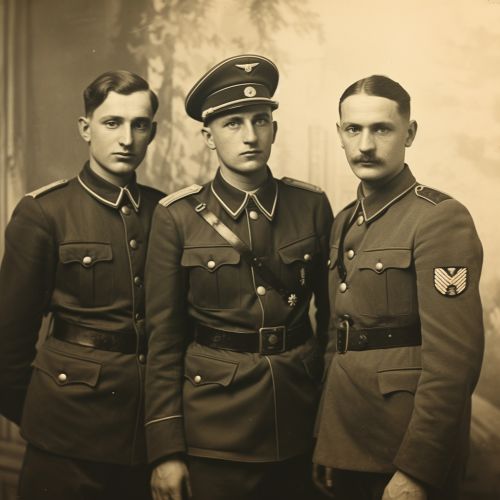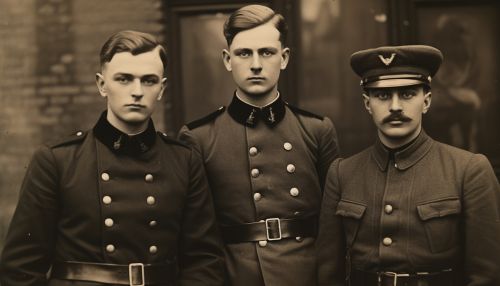Schutzstaffel
Origins and Creation
The SS, also known as the Schutzstaffel, was a major paramilitary organization under the control of the Nazi Party in Nazi Germany. It began as a small, dedicated organization tasked with the personal protection of Adolf Hitler at party rallies and functions. The SS was formed in 1925, and it grew from a small paramilitary unit to one of the largest and most powerful organizations in the Third Reich.


The SS was initially formed as a subsection of the SA and functioned under the SA's auspices. The organization was separated from the SA after the Night of the Long Knives in 1934, which allowed the SS to consolidate its power and become an independent organization.
Structure and Organization
The SS was divided into two main groups: the Allgemeine-SS (General SS) and the Waffen-SS (Armed SS). The Allgemeine-SS was responsible for the administration and implementation of the racial policies of the Nazi Party, as well as general police and security duties. The Waffen-SS, on the other hand, was the combat branch of the SS, which saw action on all fronts during World War II.
The SS was further divided into several departments, each with its specific duties and responsibilities. These included the RSHA (Reich Main Security Office), which was responsible for security, intelligence, and the secret police; the WVHA (Economic and Administrative Main Office), which managed the concentration camps and SS enterprises; and the RuSHA (Race and Settlement Main Office), which was responsible for racial and settlement matters.
Role in the Holocaust
The SS played a significant role in the implementation of the Holocaust. The organization was responsible for the administration of the concentration and extermination camps where millions of Jews, along with other groups deemed undesirable by the Nazi regime, were murdered. The SS was also involved in numerous other war crimes and atrocities during World War II.
The SS's involvement in the Holocaust was systematic and extensive. The organization was responsible for the construction and operation of the extermination camps, where millions of people were murdered in gas chambers. SS units also carried out mass shootings and other forms of brutal violence against Jews and other groups.
Post-War Legacy
After the end of World War II, the SS was declared a criminal organization by the Nuremberg Trials. Many of its members were prosecuted for war crimes and crimes against humanity. Despite this, the legacy of the SS continues to be a topic of debate and controversy.
The SS has been the subject of numerous works of literature, film, and other media, often depicted as the epitome of evil and inhumanity. The organization's symbols and imagery have also been adopted by various neo-Nazi and white supremacist groups, further contributing to its infamy.
